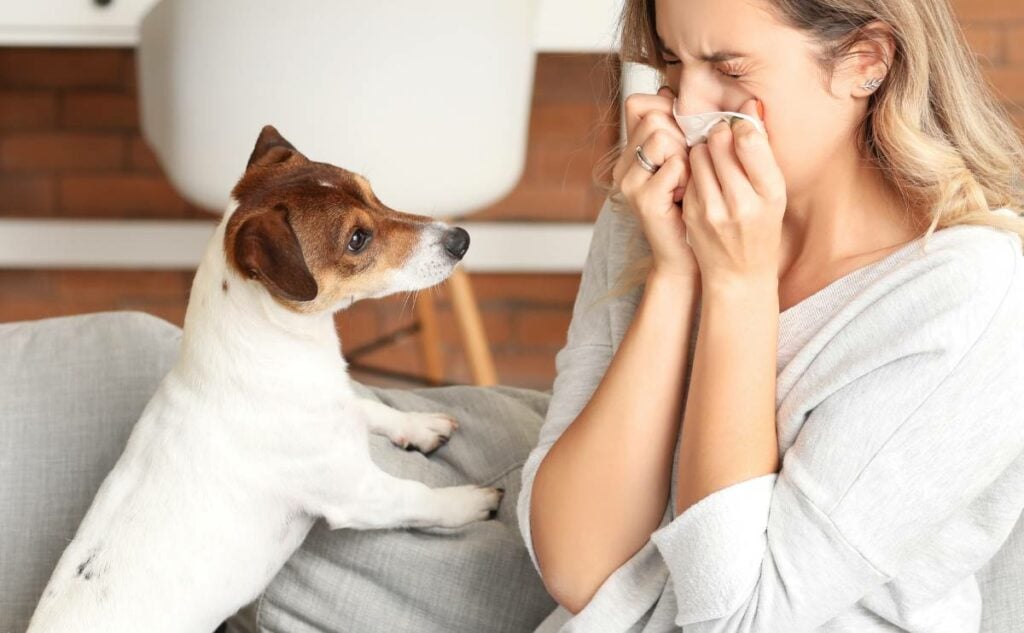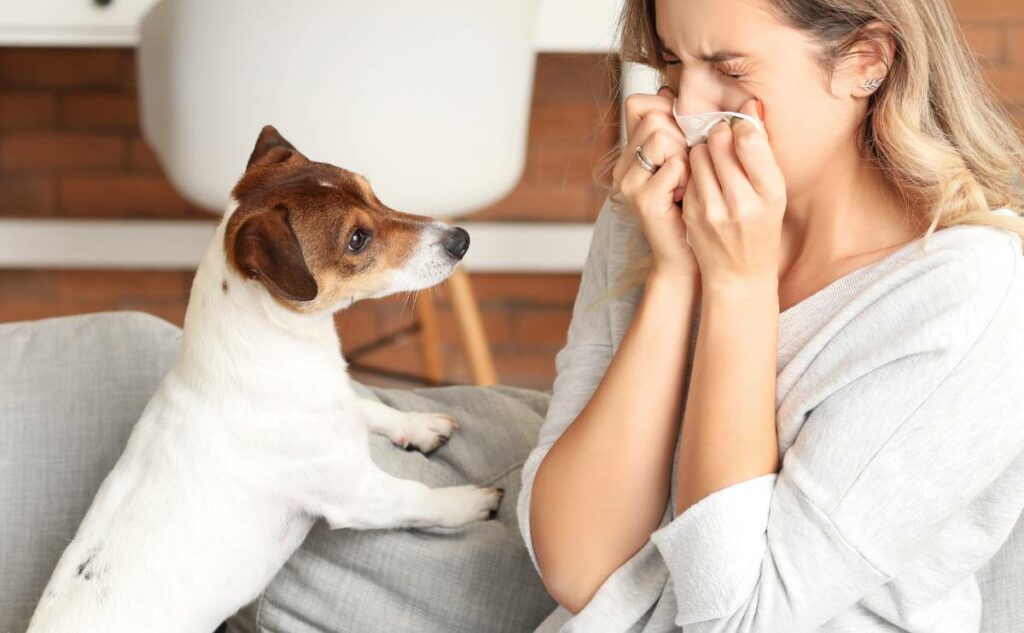

With the recent pandemic still fresh in our minds, it’s been alarming for us pet owners to realize we can give our furry family members COVID-19. But did you know that’s not the only infectious disease we can spread to our dogs and cats?
The scientific community’s understanding of human-to-animal disease transmission (termed reverse zoonosis) is seriously lacking compared to animal-to-human spread, called zoonosis. However, a recent comprehensive review of documented reverse zoonosis cases sheds light on a growing problem that could have serious implications for our pets, wild animals, and humans.
I’ll explain all of these findings and future concerns and give you some tips on protecting your pets when you and your family members become ill with diseases your pets could catch from you.
What Is Reverse Zoonosis vs Zoonosis?
Contents
The term reverse zoonosis (or zooanthroponosis) refers to humans transmitting infectious diseases to other species. Reverse zoonosis occurs when a pathogen (virus, bacteria, etc.) in humans mutates and adapts to another animal host. Unfortunately, reverse zoonosis is an understudied field, but it’s starting to get some critical attention among researchers and public health experts.
In contrast, the term zoonosis refers to humans contracting infectious diseases from animals. There’s a long history of well-researched and documented cases of zoonotic diseases. These infections are caused by viruses, bacteria, parasites, and fungi that humans can catch from animals. You’ll likely recognize most of these well-known cases.
Common Zoonotic Diseases
- Rabies – acquired by the bite of an infected animal
- H1N1 (swine flu) – The H1N1 pandemic in 2009 occurred when the swine influenza jumped from pigs to humans
- Avian flu – some types of bird influenza have occasionally spread to humans
- Mad Cow Disease – Scientifically known as Bovine Spongiform Encephalopathy, mad cow disease occurs by eating the meat of infected cows
- Cat Scratch Disease – also called cat scratch fever, it’s a bacterial infection caused by Bartonella henselae, which spreads to people through cat bites or scratches
- Lyme Disease – transmitted by infected ticks
- The Plague – transmitted by an infected flea bite, typically carried by rodents
What Does This New Review Reveal About Reverse Zoonosis?
The recently published comprehensive review of previous studies documenting incidents of reverse zoonoses (involving viral, bacterial, fungal, and parasitic pathogens) warns that pets could be at a higher risk of contracting diseases from their owners than we previously realized. It also raises concerns about the potential implications for human health in the future. The scientific review was conducted by Benjamin Anderson, Ph.D., an assistant professor at the University of Florida’s College of Public Health and Health Professions, and several of his colleagues.
“We’re starting to see a lot of examples of reverse zoonosis,” Anderson says. “Pets are more susceptible than, maybe, we previously thought.” It makes sense. Dog and cat owners come into close contact with our pets every day by showering them with snuggles and kisses, sharing our beds, and feeding them. It’s a situation ripe for contagion between species.
What Diseases Can We Transmit To Our Pets?
Anderson’s review covers several documented diseases humans have transmitted to our pets, including COVID-19, influenza A, swine flu, human norovirus, tuberculosis, and dengue. While most cases of pets becoming infected in Anderson’s review involved dogs and cats, a few occurred among horses, ferrets, and parrots. The most common diseases passed from humans to pets are influenza and coronavirus.
Why are a majority of cases in pet dogs and cats rather than pet reptiles and birds? Mammals are more genetically similar to humans, so it’s easier for viruses to mutate and become viable in mammals. Many incidents of reverse zoonoses that Anderson describes in his paper involve livestock, including pigs and cows, and captive wildlife (a majority were primates).
Reverse Zoonoses Is A Threat To Human Health
Along with the risks of our pets becoming ill with diseases we pass on to them, human-to-animal transmission presents a potential public health crisis. Scientists are concerned about reverse zoonoses for two main reasons. First, animals can be harmed by the illness. And second, it’s possible for a pathogen to mutate again and then be transmitted back to humans. Viruses are exceptionally skilled in mutating, as we’ve seen with COVID.
Scientists are finding that passing pathogens from humans to animals can result in strain mutations that can reinfect humans. Anderson warns that this risk increases every time the virus is transmitted and mutates where humans and animals are in close quarters, making homes with pets particularly vulnerable to reinfection. Minimizing transmission is essential because every single infection increases the odds that a mutation will occur and a new viral strain will emerge. One of the future possible threats is that these mutated strains could be more harmful to humans than previous ones.
Why Are Zoonitic Diseases Better Understood Than Reverse Zoonoses?
According to experts, reverse zoonosis (pets getting sick from humans) gets little attention from researchers and the general media because it’s much easier to track humans becoming ill from their pets compared to owners getting their pets sick.
“When you see a human in the clinic, you can ask questions like whether they were around any animals or if any of their pets were sick. But when you get an animal that’s sick, you may not always be able to get that kind of information to link it back to a human case,” Anderson explains.
How To Protect Your Pets From Human Disease
If you have the flu or COVID, take precautions when interacting with your furry friends just as you would with your human family members. Wash your hands frequently and try to distance yourself from your pets. Check out this brief news clip that reported on some of the first instances of pets catching COVID from humans. It also includes some important tips on protecting your pets when you’re ill.
Can Dogs Catch Colds?
Yes, our pups can catch colds. However, there aren’t any documented cases that dogs can catch a cold from humans (unlike the flu and COVID). That’s good news, but the symptoms of a cold in dogs could indicate a more severe illness. If your pup is exhibiting symptoms of the common human cold, I encourage you to read my article on dog colds to see what other conditions could be present.
Why Trust Canine Journal?
Sally and her team at Canine Journal are committed to finding the most critical and relevant research about our furry friends to help our readers stay informed from valid science compared to what some other sites may share with you based on uninformed internet hearsay.
Sally has over 20 years of experience in human and pet health sciences communications. She specializes in analyzing scientific studies and debunking false information you can easily find on the Internet to bring our readers the most trustworthy information that can be applied to real-life situations for you and your pets.